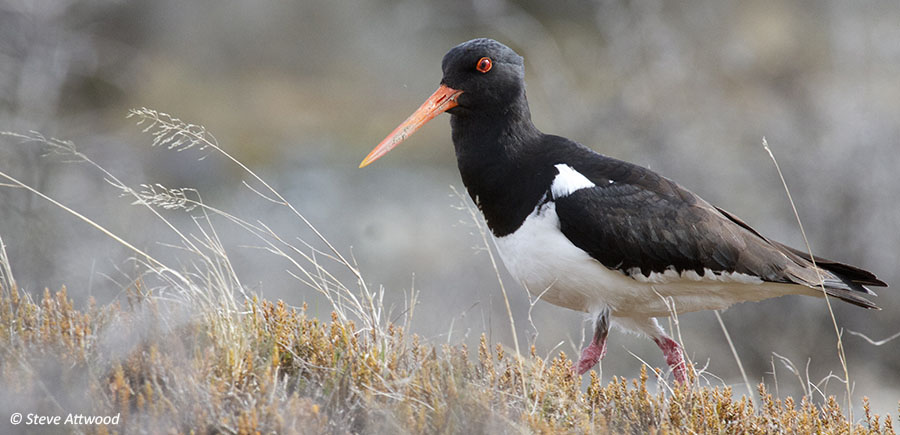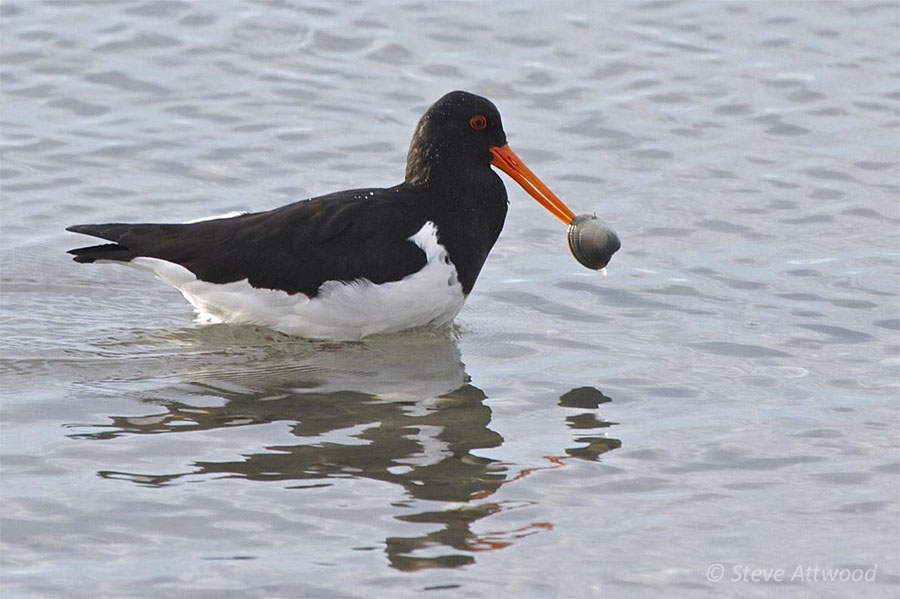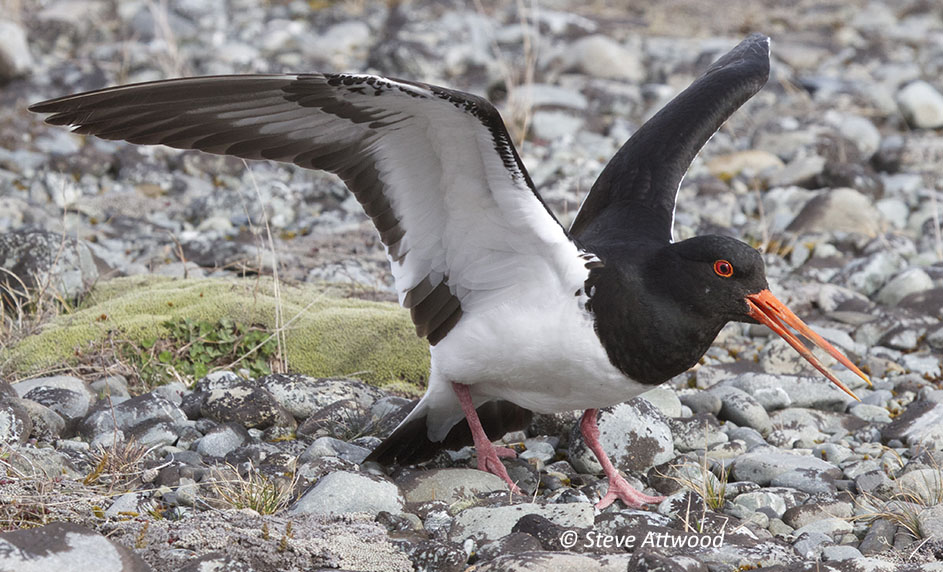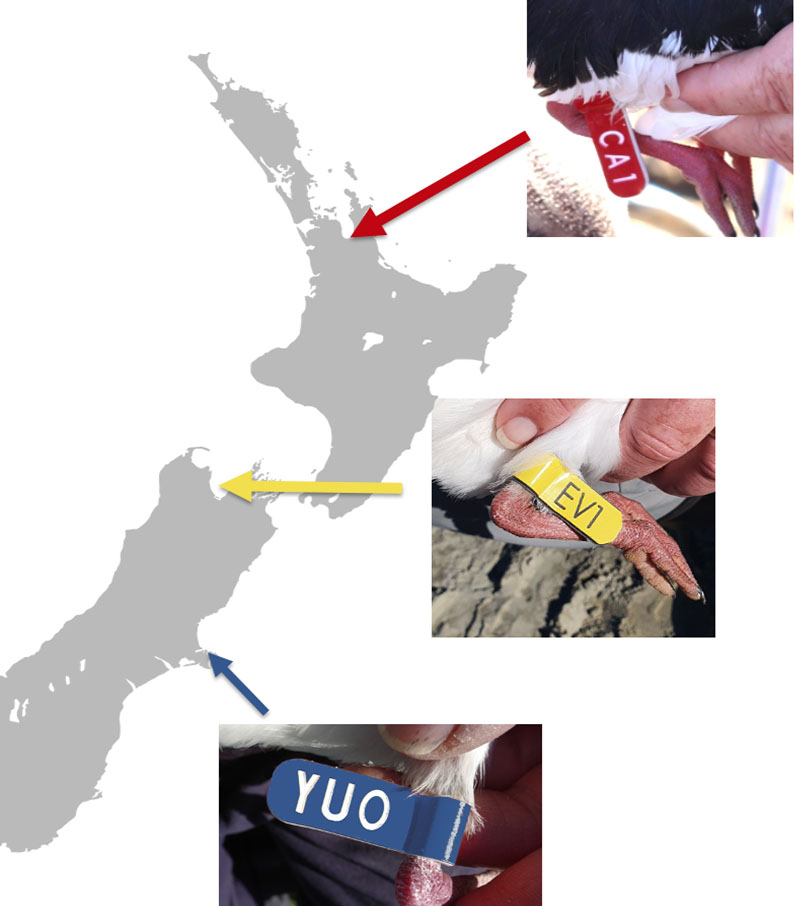South Island pied oystercatcher (SIPO)| tōrea
Status: Declining

Seen throughout New Zealand. They usually breed August-January inland in the South Island, mainly east of the Southern Alps on riverbeds and farmland, in sand scrapes on farmland or gravel banks in braided rivers. They are also known to breed on high country grasslands and in coastal areas adjacent to estuaries and lagoons where they are also found during the non-breeding season.
Research is currently underway to assess the movements of adults and juveniles around Aotearoa. If you spot a SIPO | tōrea with a coloured leg band (see images below) you can help by reporting it through the DOC bird sighting portal (best to use Chrome web browser).
Description
One of two species of oystercatcher in New Zealand, the endemic South Island pied oystercatcher (Haematopus finschi) is also known as the New Zealand pied oystercatcher, Finsch’s oystercatcher, tōrea, torea (Māori), and SIPO. In coastal areas they are commonly seen feeding in bivalves (hence their name), small crustaceans, cnidarians (jellyfish) and fish. Further inland they have been seen feeding on worms and small beetles.

Measuring 46cm long and weighing between 550gm, the SIPO | tōrea is a large, solidly built wading bird with a black back, head, and wings, with a clear delineation marking the white breast, a long bright orange bill, orange eyes, and stocky pink legs. The sexes are similar. Juveniles have a brownish tinge to their plumage, dusky red bill, and dull pink legs.
Their eggs are blotched dark and pale brown. See Taera for an image of their simple nest and eggs and to hear their call.

More information
- NZ Birds online (includes photos and sounds)
- NZ Birds
- National Geographic ARK photos
- iNaturalist
Research
- 2022: Schlesselmann et al; Increasing wader abundance: vital rates of tōrea and residual pest indexing. Manaaki Whenua – Landcare Research
- 2021: Schlesselmann; Tōrea /South Island pied oystercatcher on the move, Braided Rivers Seminar 2021
- 2018: Felton et al; Response of beach-nesting American Oystercatchers to off-road vehicles: An experimental approach reveals physiological nuances and decreased nest attendance, BioOne/American Ornithology
- 2006: Dowding & Moore; Habitat networks of indigenous shorebirds in New Zealand, SCIENCE FOR CONSERVATION 261 (DOC open-access PDF part 1 and PDF part 2)
- See also Ecology/further information and references
Conservation efforts
A joint Landcare Research and DOC project is underway to band juvenile and adult birds and track their seasonal movements. You can help by reporting sightings of banded birds to the Department of Conservation using this link (Chrome is the best web browser). Different coloured bands were used to quickly identify where birds were banded. Even if you can’t read the letters on tags, reporting coloured bands will be helpful.
The following update was presented at the 2023 Braided Rivers seminar. For more information about this project, please contact Anne Schlesselmann: schlesselmannA@landcareresearch.co.nz.


